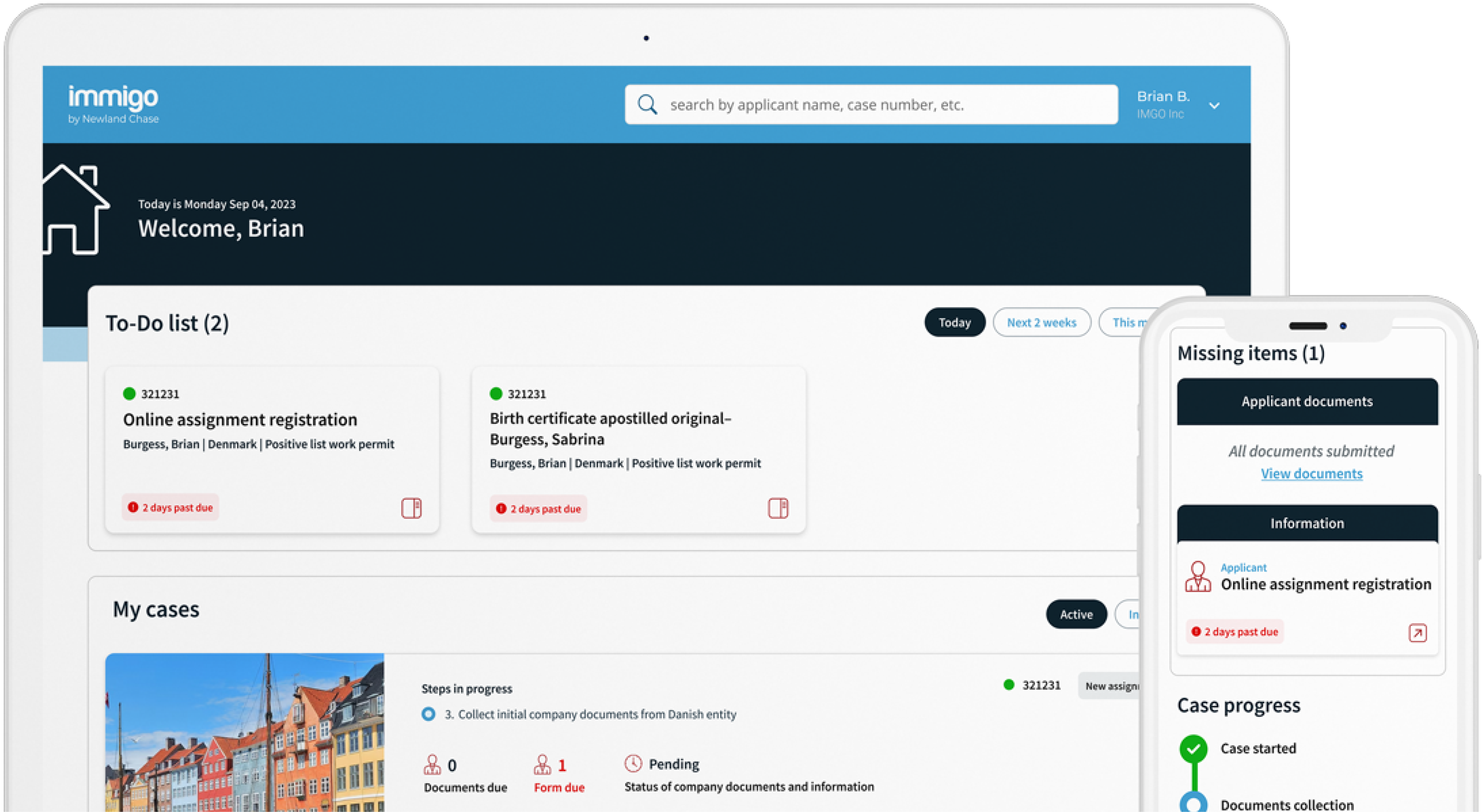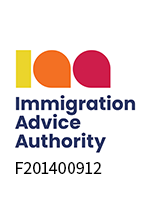Get The Visibility Your Company Needs
Reduce compliance risks and mobility costs while managing individual and project-related travel with ImmiSMART: the solution that unifies your travel and mobility programs.
Global Immigration 101: Free Trade Agreements and International Unions – Their Impact on Global Mobility
October 5, 2018
By Kent O’Neil
For successful mobility managers, school is always in session. In an industry where the only thing that is constant is everything is always changing… success depends on continually keeping abreast of new immigration rules and processes… and reminding ourselves of the same old basics vital to successful international assignments.
Whether you’re a “PhD” with years of handling your company’s international workforce… or the “new kid in class”, Newland Chase has you covered. Follow our continuing Global Immigration 101 blog series as each month we take a look at a different basic but vital aspect of immigration for short-term and long-term international business and work assignments. No tuition bills, student loans, number 2 pencils, term papers, end-of-semester exams, or all-nighters… just practical information and sage advice from the “real world” of mobility. (You’re welcome.) If you missed our last class session on “Visa-Free and Visa-on-Arrival”… you can copy my notes here.
In this month’s session, we take a whirlwind trip around the world and cover some of the more common international agreements and political and economic unions… and their impact on global mobility.
NAFTA morphing into the USMCA and the UK Brexiting the EU are the ones grabbing the most headlines lately – but there are numerous other less-famous but nevertheless important free trade agreements and international political and economic unions around the world that impact international business. While most directly impacting the trade and flow of goods, these international agreements, treaties, and associations can also have a significant impact on the ability of people to move freely between nations for immigration and business travel purposes.
What Are They?
What I’m talking about are those groupings of nations that join in some form of mutual agreement or pact to permit the free movement of capital, labour, goods, and services. For their collective benefit, the members of the group agree to coordinate various national social, legal, trade, fiscal, and monetary policies in a manner intended to benefit them all. Oftentimes these groups are referred to as “trade blocs” or “common markets”.
How Do They Impact Global Mobility?
Fundamentally, such agreements and unions increase cross-border trade and commerce between the member nations. With this increase in international economic activity, the demand for cross-border movement of people increases. To facilitate this cross-border movement, oftentimes these agreements and unions establish for the citizens of the member nations more favourable immigration and entry routes, more liberalized visa application requirements, and more standardized processes for work and residence authorization.
For example, the new United States-Mexico-Canada Agreement (USMC) announced this week to replace the North American Free Trade Agreement (NAFTA) has 34 chapters governing trade relations between the three countries. While most of the chapters speak to various aspects of the movement of goods, two chapters – Chapter 15 (Cross-Border Trade in Services) and Chapter 16 (Temporary Entry) – involve non-immigrant business and employment-based visas. (See more below.)
Which Ones Will Be on the Test?
There are more than 420 multinational free trade agreements and political and economic unions around the world. (Rest assured, I won’t try to cover them all here.) While not all have immigration and mobility aspects, here’s a quick run-down of the common ones you are likely to encounter in your adventures in global mobility.
European Union (EU)
Perhaps the “gold standard” as the most comprehensive of such unions in the world, 28 nations of Europe (soon to be 27 via Brexit) have as one of their loadstar “Four Freedoms” the Freedom of Movement of the citizens of the member states across one another’s borders and the right to live and work in any member state. To that end, numerous EU directives facilitate this freedom of movement by attempting to standardize laws and practices across all member states when it comes to – single (work/residence) permit rules, blue cards, intra-corporate transfers, posted workers, etc. Now incorporated into the EU framework, the Schengen Visa system allows third-party foreign nationals to travel relatively freely across all member states using a single visa or visa-free right.
The EU is definitely on our mind here at Newland Chase next week. For “extra-credit”… register for our live, interactive webinars – the – “Racing to Brexit: Six Months to Go” here and – “EU Posted Workers: What Every Business Needs to Know Now” here (for English presentation) and here (for German presentation).
United States-Canada-Mexico Agreement (USMCA)… aka North American Free Trade Agreement (NAFTA)
The big news in North America this week was the former NAFTA becoming the United States-Mexico-Canada Agreement (USMCA) after more than a year of renegotiation. In place since 1994, this comprehensive free trade arrangement between the three nations of North America includes provisions for non-immigrant employment-based visas for service providers and professionals, intra-company transfer permits, and 90-day business visas. While the language of the agreement applicable to these visas underwent some refinement in the new USMCA (which will take effect sometime in the next year), the basic substance of these visas remain unchanged. For a more comprehensive analysis of the USMCA/NAFTA freedom of movement provisions, follow and read Newland Chase’s blog over the next few days.
Comprehensive Economic and Trade Agreement (CETA)
Canada and the 27 member states of the European Union ratified a significant trans-Atlantic free trade agreement in February 2017. While still in the process of enactment by the governments of the EU member states, substantial parts of the agreement provisionally went into effect in September 2017. Once fully implemented, CETA will facilitate 90-day business visas, intra-corporate transfers, employment visas for professionals, and investors visas for citizens of the member nations into each other’s respective countries. For more on CETA, see our alert here.
Comprehensive and Progressive Trans-Pacific Partnership (CPTPP)
Similar in its immigration provisions to CETA, the Comprehensive and Progressive Trans-Pacific Partnership (CPTPP) is currently in the process of being ratified by Canada, Australia, Brunei, Chile, Japan, Malaysia, Mexico, New Zealand, Peru, Singapore, and Vietnam. Once ratified, CPTPP will facilitate six-month business visas, intra-corporate transfers, employment visas for professionals and technicians, and investors visas for citizens of the member nations into each other’s respective countries. For more on CPTPP, see our alert here.
Gulf Cooperation Council (GCC)
In the Persian Gulf, the nations of Bahrain, Kuwait, Oman, Qatar, Saudi Arabia, and the United Arab Emirates have since 1981 maintained a union with a governing structure, customs union, common market and… freedom of movement for citizens of the member nations. Under the union, citizens have the right to work in the various member states with streamlined work authorization, pension and social security rights, and visa-free and/or visa-on-arrival entry for business purposes. Currently, some of these freedom of movement policies have been suspended between Qatar and some of the other member nations as a result of the ongoing diplomatic and trade boycott of Qatar primarily by Saudi Arabia and the United Arab Emirates. For more on the Qatar blockade, see our blog here.
MERCOSUR
Turning to South America, we have the Mercado Común Del Sur, more commonly referred to simply as MERCOSUR. This trade bloc consists of Argentina, Brazil, Paraguay, and Uruguay as full members, and Bolivia, Chile, Peru, Colombia, Ecuador, and Suriname as associate members, with Venezuela currently suspended from membership. MERCOSUR maintains a governing structure, a customs union, and a trading bloc. MERCOSUR has significant freedom of movement aspects as well, including – visa-free entry for business purposes; universal rights to live and work in member nations; a common residency agreement; equal protection for working conditions, family reunification, and education; and streamlined work and residency processes for MERCOSUR nation citizens.
Association of Southeast Asia Nations (ASEAN)
Ten nations belong to the Association of Southeast Asia Nations, better known as ASEAN: Indonesia, Malaysia, the Philippines, Singapore, Thailand, Brunei, Cambodia, Laos, Myanmar, and Vietnam. ASEAN is a regional intergovernmental body designed to promote cooperation and integration between the member states economically, politically, militarily, educationally, and culturally. While there is not general freedom of movement yet, the continuing integration efforts have the potential to lead to greater mobility across member nations’ borders. We are already seeing mutual agreements recognizing professional licensing and credentials that better facilitate citizens practicing their professions in other member nations.
Economic Community of West African States (ECOWAS)
In Africa, probably the most successful attempt at regional cooperation thus far has been the Economic Community of West African States, known by its acronym ECOWAS. ECOWAS consists of fifteen nations made up of Benin, Burkina Faso, Cape Verde, Gambia, Ghana, Guinea, Guinea-Bissau, Ivory Coast, Liberia, Mali, Niger Nigeria, Senegal, Sierra Leone, and Togo. The stated goal of this union is “collective self-sufficiency” for the region, and it maintains an intergovernmental structure, a development bank, and a joint military peacekeeping force. ECOWAS has had a general protocol on the freedom of movement since 1979 which includes a regional right of entry, work, and residence. However, chronic political and societal unrest and crime concerns strain the balance between security and freedom of movement.
African Union
More recently on the scene in Africa is the much more ambitious African Union. Founded just in 2001, the union includes all 55 African nations and has a broad charter of continent-wide political, social, security, economic, and humanitarian goals. Its lofty goals include a continent-wide trade area, customs union, central bank, and common currency by 2023, and an African Union Passport by 2018. While clearly the African Union will miss its 2018 deadline this year, it has achieved some significant success in reducing border entry requirement for its member nations’ citizens. While only one African nation offers visa-free entry to all African citizens, and 14 nations offer visa-free entry to a majority of other African nations, there is a clear trend toward freedom of movement across the continent due to the African Union efforts. While realization of its complete vision is many years off if ever, it is certainly a trend to watch.
Class Dismissed
I know this week’s class ran a little long, but hopefully we’ve covered at least some of the many international free trade agreements and political and economic unions that global mobility managers will encounter in the ever-changing, rarely-boring, and always-rewarding quest to facilitate international business and the global travel, relocation, and immigration of the great individuals and families we have the privilege of serving.
Join us again next month for another exciting Global Immigration 101 class session and keep reading our alerts and blogs on the Newland Chase website at blog.newlandchase.com to keep on top of all the latest in global immigration news you can use. For general inquiries regarding how Newland Chase can support your business in any of the 130+ countries where we operate, email us at [email protected].
This blog is informational only and is not intended as a substitute for legal advice based on the specific circumstances of a matter. Readers are reminded that immigration laws are fluid and can change at a moment’s notice without warning or notice. Please reach out to your Newland Chase contact should you require any additional clarification or guidance. Written permission from the copyright owner and any other rights holders must be obtained for any reuse of any content published or provided by Newland Chase that extend beyond fair use or other statutory exemptions. Responsibility for the determination of the copyright status and securing any permissions rests with those persons wishing to reuse this blog or any of its content.




